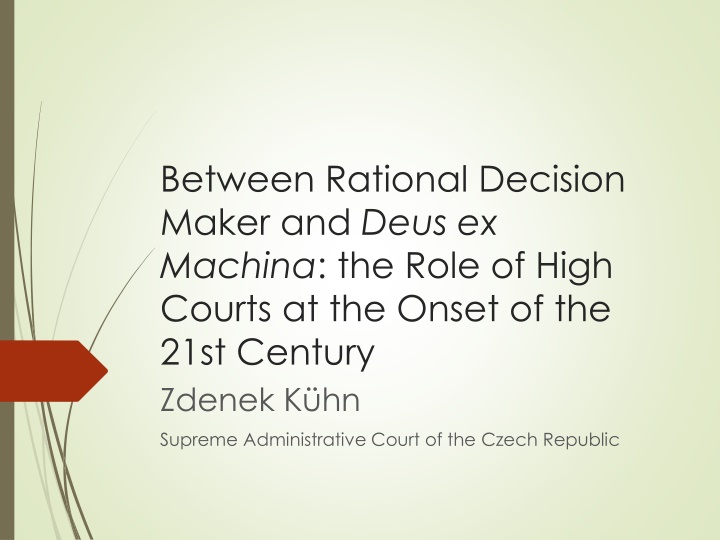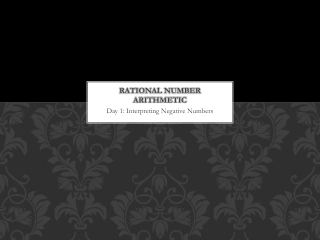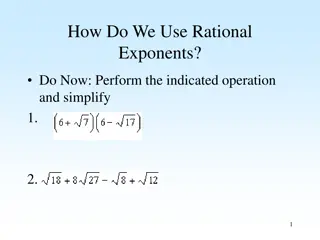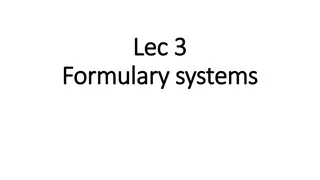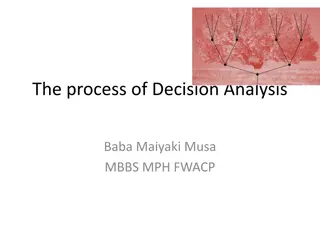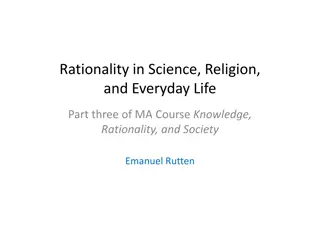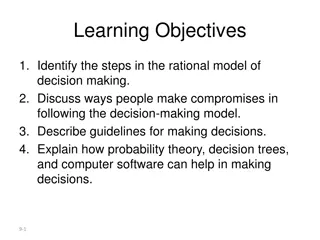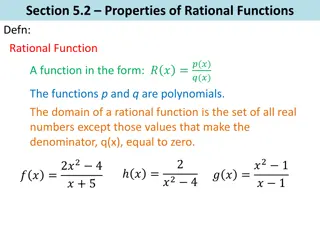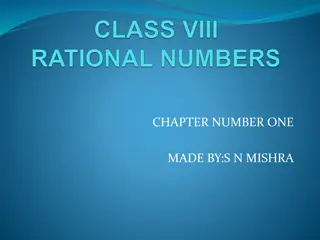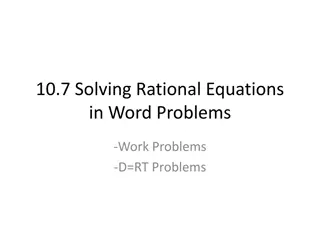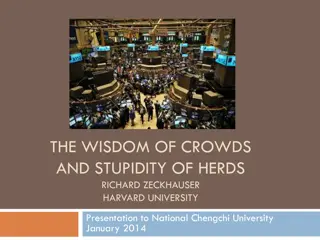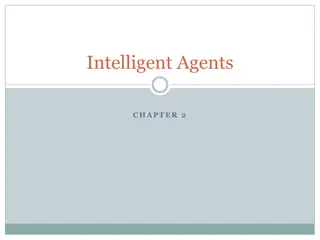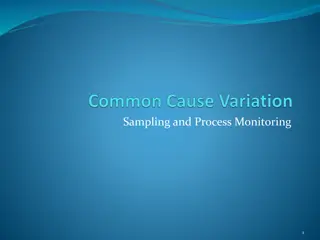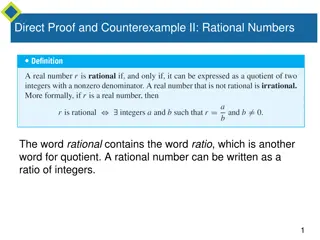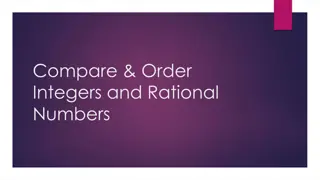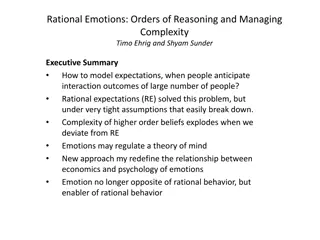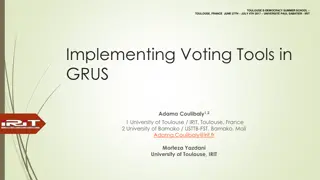Between Rational Decision
Germanic, French, and Common law styles of legal reasoning and communication within high courts reflect evolving concepts of authority and transparency, as evident in the 21st century. Explore the shifting trends in judicial decision-making and the impact on legal cultures across Europe.
Download Presentation

Please find below an Image/Link to download the presentation.
The content on the website is provided AS IS for your information and personal use only. It may not be sold, licensed, or shared on other websites without obtaining consent from the author.If you encounter any issues during the download, it is possible that the publisher has removed the file from their server.
You are allowed to download the files provided on this website for personal or commercial use, subject to the condition that they are used lawfully. All files are the property of their respective owners.
The content on the website is provided AS IS for your information and personal use only. It may not be sold, licensed, or shared on other websites without obtaining consent from the author.
E N D
Presentation Transcript
Between Rational Decision Maker and Deus ex Machina: the Role of High Courts at the Onset of the 21st Century Zdenek K hn Supreme Administrative Court of the Czech Republic
Legal cultures and legal reasoning Germanic legal style (most countries of Central Eastern Europe) French legal style Common law style Nordic style Common trends: constitutionalization of ordinary law Courts communication with the parties With the public in general (beyond the parties)
Germanic legal culture Frequent quotation of case law Scholarly literature Decisions relatively long, they are getting longer than they used to be Technical language, difficult to understand for lay people
French style Shorter opinions Quotation to case law missing or much less frequent than in German legal style X Other instruments making opinions of high courts rational: advocates general, extensive case notes by the legal academia Warning: the French style shall not be confused with a defunct imitation of the German style
Common law style Very detailed, less formal language much less technical language than opinions produced by continental judges Concurring and dissenting opinions in higher courts
Authority and transparency Changing concept of the authority including judicial authority in Europe at the onset of the Third Millennium The trust in the institution itself X the trust in the institution subject to the fact that it justifies its activity Example: judges in the Middle Ages did not need to justify their opinion, the correctness of their judgments flowing from the fact that through their mouths it was the King who was speaking
The drive away from authoritarian approach to law The authoritarian approach to law, combined with formalist textual positivism, accords to the judge the exclusive role in constructing the meaning of the law. It is so because (1) the application of law is conceptually viewed as the resolution of easy cases by the court, which does not, in that process, require the assistance of either party (formalist aspect) and (2) the construction of the law is the result of a top-down process, where parties are the addressees of the result of construction rather than direct or indirect participants on that construction (authoritarian aspect)
The drive away from authoritarian approach to law The judicial discourse of any legal system is inherently authoritative. This is a result of the fact 1) that by definition courts must decide as if there were one correct answer to the questions presented to the court (the judicial one right answer thesis), and 2) that judicial decisions are final because of their authority within the judicial and legal system. Authoritative judicial discourse does not preclude, but on the contrary presupposes, a plurality of opinions and the participation of all competent persons in the legal decision-making process. Plurality of opinion and the fact that the court takes all relevant opinions seriously gives to the decision-maker of last resort the legitimacy to provide the right answer, which is a necessary condition of the discourse to remain authoritative
Adversarial and inquisitorial trial in Central Eastern Europe adversarial European and inquisitorial socialist era trial basic differences Different conceptions of truth Different conceptions of the values and interests behind trial the drive towards adversarial (contradictory) trial in last twenty years, guidelines provided by the European Court of Human Rights Have impact on the courts communication with the parties
The drive towards adversarial trial Lobo Machado v. Portugal, Grand Chamber 20 February 1996, no. 15764/89, 31 The duty of the judge to inform the parties about anything which is happening in the trial; beyond mere equality of parties The right to adversarial proceedings (Art. 6 of European Convention) means in principle the opportunity for the parties to a criminal or civil trial to have knowledge of and comment on all evidence adduced or observations filed, even by an independent member of the national legal service, with a view to influencing the court s decision
Courts communication with the general public Via the courts websites Development in the course of the 1990s (case law, names and pictures of judges etc.) Social networks Twitter, Facebook, Google + Traditional approach the court speaks only via its website (Latvia, the Czech Republic with respect of both supreme courts, Ireland, Belgium, Austria) The use of social media networks Raad van State in the Netherlands (Twitter over 11 000 followers, Facebook, LinkedIn), the Czech Constitutional Court (Twitter 2200 followers and Facebook), Austrian Constitutional Court (Twitter - almost 4 000 followers), French Conseil d'Etat (only Twitter almost 100 000 followers), Estonian Supreme Court on behalf of the entire judiciary (Facebook and Youtube), EU Court of Justice (Twitter 25 000 followers) etc.
The Experience of the Dutch Council of State [The use of the] website is very limited, since people do not regularly check your website for news. And if they do, it s mostly people who interested in our judgments and advisory opinions. We find that we attract a bigger and more diverse crowd by using Twitter to get our press releases and summaries of advisory opinions across. It takes up a bit of time, however it s not that time-consuming as people might think. And, a very big advantage is that we find it also a very useful way to get information (instead of using it only as a way to send information) when the Council of State is mentioned in (internet)news, blogs and twitter accounts of other people. The only downside is that Twitter is unlimited, so you are bound to get also a lot of tweets you don t need, or particularly want to read. Simon Peers, http://www.aca- europe.eu/forum/viewtopic.php?f=3&t=247 are already professionally
